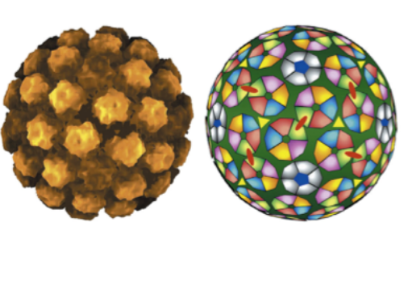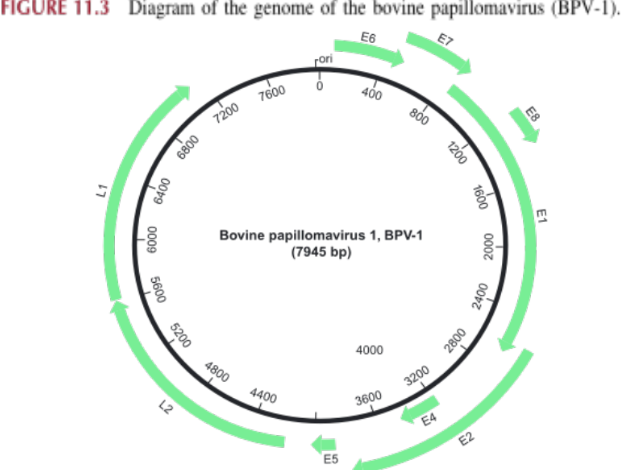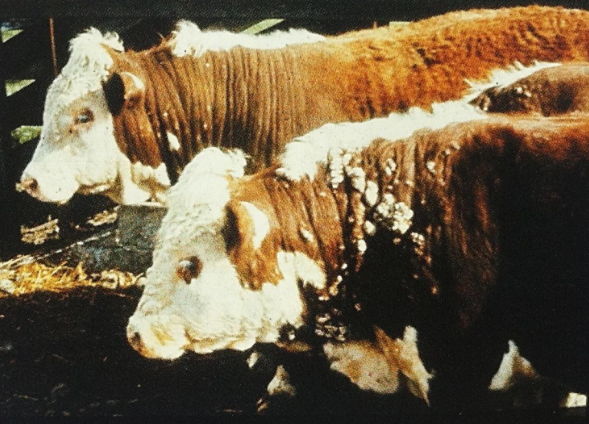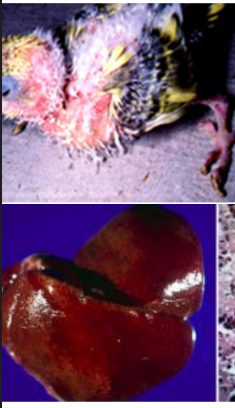Papilloma and Polyoma
1/23
There's no tags or description
Looks like no tags are added yet.
Name | Mastery | Learn | Test | Matching | Spaced |
|---|
No study sessions yet.
24 Terms
Polyomaviridae and Papillomaviridae morphology?
Isometric
Types of Papillomas
Papillomavirus-induced papillomas(warts) - common in YOUNG and most SPONTANEOUSLY resolve
Non-viral papillomas - Benign neoplasms in OLDER animals and DO NOT spontaneously resolve
What other viruses can cause papillomas or warts?
Herpes viruses
Diagnosis of Papilloma virus
Histological exam
Immunohistochemistry(proteins)
PCR(NA)
Isolation(difficult to do)
Polyomaviruses
Formerly named as Papovaviridae
Polyomaviruses
Used for the discovery of the polio vaccine
Causes cancer in rodents
Causes neurological disease in lab primates(monkeys)
Most infections in mamals result in no disease except for birds
Highly host specific
Alphapapillomavirus
human papillomavirus (HPV) 32*
Betapapillomavirus
HPV 5*, 9, 49
Deltapapillomavirus
European elk papillomavirus, 2*
Bovine papillomavirus 1
Ovine papillomavirus 1
Epsilon papillomavirus
Bovine papillomavirus 5*
Etapapillomavirus
Fringilla coelebs papillomavirus
Gammapapillomavirus
HPV 4*, 48, 50,60,88
Iotapapillomavirus
Mastomys natalensis papillomavirus
Lambdapapillomavirus
Canine oral papillomavirus
Morphology of Papilloma and Polyomavirus
non enveloped
Spherical
Composed of 72 six sided capsomeres arranged in 5 sided arrays

Genome and Viral proteins
circular dsDNA
L1,L2 proteins - forms capsid(structural proteins)
E1 to E8 - form non structural proteins for regulation and replication

Virions resistant to X insults and X survives lipid solvents, detergents, low pH, high temperatures
Virions resistant to environmental insults and infectivity survives lipid solvents, detergents, low pH, high temperatures
Virus Replication
Virus replication linked to growth and
differentiation of cells in stratified squamous
epithelium (from basal layer to top layer)\
Microtrauma(sugat) starts infection
Cell entry: basement membrane keratinocytes
Viral genome and E proteins enter cell nucleus
Production of copies of viral genome in episome form
Productive virus replication during terminal differentiation of host cell
Cell normally stops dividing upon terminal differentiation but it is prevented by the E protein so virus can complete its replication
Papilloma forms by increasing the keratinocyte replication

Immune response to infection
Virus minimizes the innate immuse system recognition by not causing cell lysis and by only producing viral antigen in superficial layers of epidermis(S.granulosum)
Vaccines attack the virus but does not trigger cell mediated immunity. No papilloma regression
During replication, polyomavirus DNA is transcribed from X strands, whereas papillomavirus DNA is transcribed from X strand
During replication, polyomavirus DNA is transcribed from both strands, whereas papillomavirus DNA is transcribed from one strand
Cattle papillomavirus
Warts more commonly found than other species
common in calves and yearlings
transimitted by fomites(contaminated milking equipements and more)
Venereal warts through sexual transmission (can be avoided by AI)
Warts occur 6 wks after infection
Persist 1-6 months then regress(CMI mediated)
Rarely Florid infection can occur

Oral canine papillomavirus
most common papillomavirus in dogs
typically affects young dogs
lips, buccal mucosa, tongue, palate and pharynx
develop 4-8 weks after infection
Feline papillomavirus
rare in cats
Budgerigar fledgling disease
bird polyomavirus
abnormal/poor feather growth
depression, hemmorhage, anorexia, weight loss, ataxia, diarrhea and death
hepatitis
